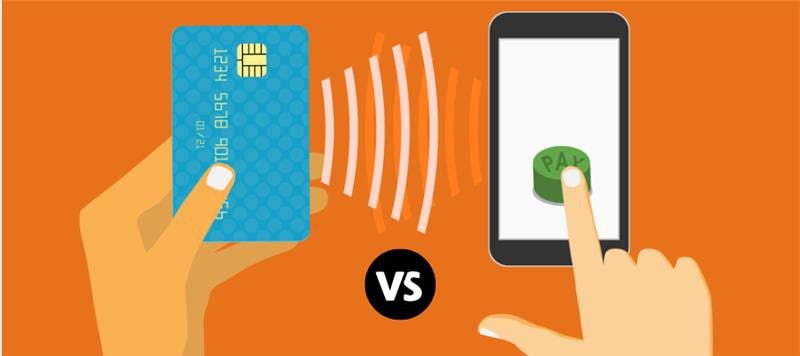
Choosing Between EMV and NFC Payments: A Smart Guide for Business Owners
As digital payments continue to evolve, businesses are increasingly faced with choices about which payment technologies to adopt. Two of the most common and important options are EMV (Europay, MasterCard, and Visa) chip payments and NFC (Near Field Communication) contactless payments. Both offer modern solutions to traditional swipe-and-sign methods, but they function in different ways and come with unique benefits.
Whether you're a small boutique or a large-scale retailer, understanding the differences between EMV and NFC payments can help you make better decisions that improve customer experience, enhance security, and streamline operations.
What is EMV?
EMV technology uses a chip embedded in a physical credit or debit card. When a customer inserts (or “dips”) their card into an EMV-compatible terminal, the chip generates a unique transaction code that cannot be reused. This makes it much harder for fraudsters to clone the card or intercept sensitive data.
EMV cards became more widespread in the United States after the 2015 liability shift, which held merchants responsible for certain types of fraudulent transactions if they hadn't upgraded to EMV-compliant terminals.
Benefits of EMV:
-
Improved security: Unlike magnetic stripe cards, EMV cards are much harder to duplicate.
-
Wider customer acceptance: Most banks issue EMV cards, and customers expect businesses to accept them.
-
Fraud liability protection: Using EMV reduces your risk of chargebacks due to counterfeit card fraud.
Limitations of EMV:
-
Slower checkout experience: Dipping the card can take a few extra seconds compared to swiping or tapping.
-
Physical interaction required: During high-contact concerns (e.g., post-pandemic), some customers prefer contactless options.
What is NFC?
NFC (Near Field Communication) is a contactless payment technology that allows customers to pay by simply tapping their card or mobile device on a compatible terminal. Smartphones with digital wallets like Apple Pay, Google Pay, and Samsung Pay use NFC to transmit payment information securely and wirelessly.
NFC technology enables faster transactions and a more seamless experience, which is particularly valuable in high-volume environments like cafes, fast food restaurants, and convenience stores.
Benefits of NFC:
-
Speed and convenience: Transactions are nearly instant—just tap and go.
-
Contactless: Reduces physical contact, a growing preference among health-conscious consumers.
-
Mobile integration: Supports smartphone wallets, wearables, and other modern tech, appealing to younger demographics.
-
Future-ready: Positions your business to adapt to evolving payment preferences.
Limitations of NFC:
-
Cost of upgrading: NFC-capable terminals may cost more than basic EMV terminals.
-
Consumer adoption: Not all customers use mobile wallets or contactless cards—yet.
-
Internet dependency: Mobile payments typically require a stable connection for both merchant and customer devices.
EMV vs. NFC: Key Differences
|
Feature |
EMV |
NFC |
|
Technology |
Chip-based card processing |
Wireless, radio-frequency communication |
|
Payment Method |
Card must be inserted |
Card or device is tapped |
|
Speed |
Slower (requires insertion and waiting) |
Fast (instant tap-and-go) |
|
Security |
High (dynamic transaction codes) |
Very high (tokenization and encryption) |
|
Contactless? |
No |
Yes |
|
Hardware Required |
EMV-compatible terminal |
NFC-enabled terminal |
|
Popularity |
Widely used, especially for chip cards |
Rapidly growing, especially with mobile pay |
What’s Better for Your Business?
Deciding between EMV and NFC isn’t necessarily an either/or choice. Many modern terminals support both. But if you're prioritizing one over the other—or trying to decide where to invest first—consider the following:
1. Your Customer Demographics
If your customers skew older or prefer traditional payment methods, EMV might be more crucial to have. If your clientele includes tech-savvy or younger individuals, NFC support may enhance their shopping experience.
2. Business Type and Volume
Fast-paced businesses like coffee shops and quick-service restaurants benefit most from NFC's speed. On the other hand, high-ticket businesses (like furniture stores or jewelers) might prioritize the robust security of EMV for larger transactions.
3. Security Needs
Both EMV and NFC offer strong security features. However, NFC goes one step further by using tokenization—replacing card data with a unique digital token for each transaction, making it virtually impossible to intercept or clone.
4. Cost of Implementation
Upgrading to EMV-compatible terminals is typically less expensive than implementing NFC if you're starting from scratch. But many new payment terminals come with dual support, so the investment pays off in versatility.
5. Customer Experience
Long checkout lines? NFC can help. Customers increasingly expect a smooth, contactless option. Especially after the pandemic, the demand for tap-and-go convenience continues to rise.
Why Not Both?
The smartest approach for many businesses is to support both EMV and NFC payments. Payment processors and terminal providers often bundle both technologies in a single machine. By adopting both, you're not only improving security and customer satisfaction but also future-proofing your business.
In fact, offering both can boost customer trust. When consumers see that your business supports secure chip cards and cutting-edge mobile payments, they perceive you as professional, modern, and trustworthy.
Final Thoughts
In today's competitive market, your payment system can be more than just a checkout tool—it can be a differentiator. EMV ensures you're protected from counterfeit fraud, while NFC offers the kind of fast, seamless, contactless experience modern consumers appreciate.
Ultimately, the best payment solution for your business may not be about choosing EMV or NFC—but understanding how both can play a role in enhancing your operations, keeping customers happy, and protecting your bottom line.
If you're looking to upgrade your payment terminals or want to know how to implement NFC or EMV for your specific business model, speak with your payment provider. A little investment now can lead to smoother operations and happier customers down the road.


